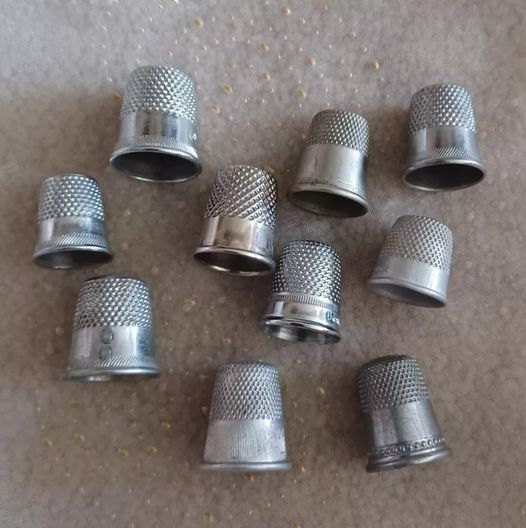Thimbles have a fascinating history that stretches back to ancient times. Archaeologists have unearthed the earliest known thimbles in the ruins of Pompeii, dating all the way back to the 1st century AD. These early thimbles, made of bronze, were simple yet functional tools designed to protect fingers during sewing.

During medieval times in Europe, thimbles were crafted from materials like leather, wood, and metal. By the 14th century, Nuremberg, Germany, emerged as a major hub for brass thimble production. The 17th century brought further advancements in thimble design, with the wealthy favoring silver and gold thimbles as both practical tools and symbols of status.
The Industrial Revolution of the 19th century revolutionized thimble production. Factories began churning out thimbles efficiently and in large numbers, making them readily available to the wider population. Decorative and collectible thimbles, adorned with intricate designs, engravings, and gemstones, became quite fashionable during this period.
Usage
The primary purpose of a thimble is to protect fingers from needle pricks while sewing. Usually worn on the middle finger, it allows sewers to push needles through tough fabrics with greater force and precision.
But sewing wasn’t the only trade to benefit from thimbles. They were also used in various other crafts such as bookbinding, leatherworking, and lace-making.
Thimbles even made their way into popular culture and folklore. For instance, in the classic board game Monopoly, one of the original game pieces is a thimble, which reflects its common presence in early 20th-century homes. In literature, such as the beloved story “Peter Pan,” a thimble is symbolically used as a kiss.
Legacy
Vintage thimbles are highly sought after by collectors and enthusiasts today. Their historical importance, varied designs, and fine craftsmanship make them prized artifacts. Many collectors focus on thimbles from specific periods or those made from particular materials like porcelain, bone china, or sterling silver.
Numerous museums and exhibitions celebrate the legacy of thimbles. One notable example is the Fingerhut Museum in Creglingen, Germany, which is home to thousands of thimbles from different eras and regions.
Modern artisans and crafters continue to find inspiration in thimbles. They appreciate both their utility and aesthetic appeal. Contemporary thimble makers often blend traditional techniques with modern designs, honoring the rich heritage of thimbles while appealing to today’s tastes.
In conclusion, vintage sewing thimbles are far more than just practical sewing tools. They serve as historical artifacts that highlight the evolution of craftsmanship, social status, and cultural practices over the centuries. The enduring legacy of thimbles underscores their importance in sewing history and continues to be celebrated by collectors and enthusiasts alike.




